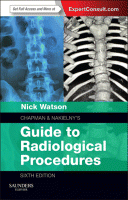Physical Address
304 North Cardinal St.
Dorchester Center, MA 02124

These Regulations, together with the Ionising Radiations Regulations 1999 (S.I. 1999/3232) partially implement, as respects Great Britain, Council Directive 97/43/Euratom (OJ No. L180, 9.7.97, p. 22) laying down basic measures for the health protection of individuals against dangers of ionizing…

You’re Reading a Preview Become a Clinical Tree membership for Full access and enjoy Unlimited articles Become membership If you are a member. Log in here

You’re Reading a Preview Become a Clinical Tree membership for Full access and enjoy Unlimited articles Become membership If you are a member. Log in here

Introduction It is a legal requirement that consent be obtained from a patient before any medical care can be provided, with the exception of emergencies where consent cannot be obtained. Consent can take two forms: implied or express. When patients…

Medical emergencies occurring in the radiology department may be due to: 1. Medication or radiographic contrast given 2. Procedure-related complications 3. Deterioration of pre-existing morbidities. Patients may develop cardiac arrhythmias, hypotension, inadequate ventilation or adverse drug/radiographic contrast reactions. Complications arise…

Sedation Sedation is the use of a drug or drugs to produce a state of depression of the central nervous system that enables interventional procedures or treatment to be carried out. Sedative drugs may be combined with drugs used for…

Methods of imaging the breast 1. Mammography 2. Ultrasound (US) 3. Magnetic resonance imaging (MRI) 4. Radionuclide imaging 5. Imaging-guided biopsy/pre-operative localization. Mammography Indications 1. Focal signs in women aged >40 years in the context of triple (i.e. clinical, radiological…

Methods of imaging the thyroid and parathyroid glands 1. Plain film (limited to crude assessment of superior mediastinal extension of thyroid goitre and any secondary tracheal displacement and narrowing) 2. Ultrasound (US) 3. Computed tomography (CT) 4. Magnetic resonance imaging…

Methods of imaging the nasolacrimal drainage apparatus 1. Conventional/digital subtraction dacryocystography 2. CT dacryocystography 3. Magnetic resonance dacryocystography. Further Reading Ansari SA, Pak J, Shields M: Pathology and imaging of the lacrimal drainage system. Neuroimaging Clin N Am 2005; 15:…

Methods of imaging the spine Many of the earlier imaging methods are now only of historical interest (e.g. conventional tomography, epidurography, epidural venography): 1. Plain films . These are widely available, but with low sensitivity. They are of questionable value…